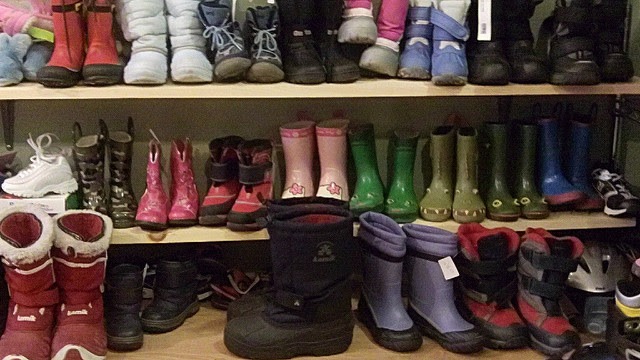How to be a One-Car Family
We are typically a two-car family. My husband drives a small sedan to work daily, and I’m a stay-at-home/work-from-home mom who drives a small SUV for errands and to get my kids to extracurricular activities.
A few years ago, a maintenance truck hit my husband’s sedan while he was leaving his employer’s parking lot at the end of the day. No one was hurt, and my husband’s car was technically still driveable, but one of his rear brake lights was broken and inoperable.
My husband feared getting ticketed for driving without a brake light, so we agreed he would use my SUV to drive to and from work until his car could be repaired. Because I drove less and our grade-school-aged child walked to school, we figured I could manage without a car during the daytime for a week or two. I could do the grocery shopping during the weekends, and the weather was mild enough that I could entertain the kids by walking to the local park. Our youngest child’s preschool school year was going to start back up in a few weeks and I would need to drive her several times a week, but we were hopeful the car would be repaired by then
The problem was that we experienced a long delay getting the car repaired. The police report was delayed, and then it got lost and, finally, it was found again. Then the insurance companies fought over whose fault it was, even though the police report clearly stated my husband was not to blame. At last, once the car was at the body shop, they ordered a wrong part that further delayed repairs.
Ultimately, we spent 10 weeks, or about two months, as a one-car family.
It was not always easy to arrange our schedules around one car, and it was frustrating because so much was out of our control. My husband and I discussed how difficult a situation like ours could be for families with extremely low or limited income. We weren’t offered a complimentary rental car, and while we could have forked over our own money to rent a car if we really wanted to, not every family has that kind of money.
What helped us was that, when we realized it was going to be a long haul, some close friends offered us the use of one of their cars that they did not drive much. More than one family made this offer, and we were grateful. It was a big help when our youngest child’s preschool classes resumed; otherwise I would have had to delay enrolling her.
Still, we drove our friends’ car sparingly because it’s bad enough if you get into an accident with your own car, but it’s worse if you get into an accident with a friend’s car. We didn’t want to risk it much. We found ways to drive less, walk more, and be more resourceful and creative in general.
We live in the suburbs of a major metropolitan area, so some of these ideas may not work if you live in a remote rural area. However, if you’re looking for ways to manage either short- or long-term without a spare vehicle, consider some of these options:
Walk your kids to school, if possible.
If you live less than a mile from school, you should consider walking on a regular basis if the weather is cooperative. It’s healthy, saves gasoline, and reduces traffic around the school, which makes it safer for children walking.
We live about two blocks from our neighborhood elementary school, and I walk my grade-school-aged children to and from school every day. As a result, we never contribute to the nasty traffic jam every day during dismissal. For my child who was in preschool at the time we were without a second car, walking would not have been possible because it was too far away, and so our family was grateful to our friends who loaned us their car.
Carpool with other parents to get your kids to school.
Plenty of parents are willing to take on an extra rider or two if they have seats in their cars. It can be intimidating to ask for help, but many people are happy to help in this way. Consider saying thank you with some homemade goodies or a gift card. When your own situation is better later, you can also repay the favor by providing another kid with a ride to school.
If we hadn’t ended up borrowing our friends’ car, I was ready to call a few other moms from my child’s preschool class and ask if they could give my child a ride. I’m sure they would have been happy to help, and I would have returned the favor for them at some future time if they needed help.
Carpool to work, if possible.
Find out if any of your coworkers live near you and ask if you can hitch a ride. You can even offer to pitch in money for gas. Again, carpooling saves on gasoline and reduces traffic. Once you have reliable transportation of your own later, you can offer to take turns driving.
If I worked outside of our home, this might have been a necessity for me. Other options for getting to work include biking or walking if weather and distance permit, or taking public transit if it’s available in your area (although it often takes much longer to reach your destination this way).
Look into working from home.
Depending on your job type, many employers offer flexible scheduling options like this now. Even if you only work from home one or two days a week, those are one or two days you don’t have to worry about transportation.
I work from home as an editor and writer, so I fortunately don’t have to worry about how I’ll get to work.
Use Uber, Lyft, or another driving service.
There are so many options when it comes to getting a ride these days. This may not work as well if you have young children with car seats, but it’s probably cheaper than renting a car.
Drive your spouse or partner to work and then use the car yourself.
As long as the other person does not mind being without personal transportation and is okay relying on others to get around, this is a feasible option. It takes a little time and requires rearranging the schedule a bit, but it might work for you. My parents frequently did this when I was growing up during times when they had a car stuck in the mechanic’s shop for a few days.
My husband leaves the house early in the morning for work, so this was a last resort during the time when we were without a second car because I didn’t want to get the kids out of bed so early. Also, this option would have had me driving about an hour a day going back and forth, but it would have kept us independent.
Walk to stores and businesses if you are able.
Not everyone lives in a walkable community with lots of businesses nearby. Take stock of what is located within a 15-minute walk of your house. You may only have corn fields, or there may be a gas station, dollar store, or drugstore. Knowing you have a place to buy small essentials is helpful when your vehicle options are limited. Walking also is good exercise.
We don’t really live in a walkable community — this is the United States, after all — but we have some gas stations and small strip malls with two different dollar stores, some restaurants, a shoe store, and a few other shops within an 8- to 10-minute walk from our house, and there are sidewalks all the way. If we are willing to cross a busy road at a stoplight, we also could walk to McDonald’s and a chain drugstore. During our time without our second car, I walked to the dollar store when we needed basic items like toiletries, children’s birthday party gifts, greeting cards, or just a few food items. My youngest child came along and walked or rode in the stroller.
Walk to local parks for entertainment and exercise.
Are there any local green spaces you can walk to from your house? Do you have a park or school playground?
We have a park that’s less than a 10-minute walk from our house and is a good place for the kids to burn off energy. In addition, if school wasn’t in session, we could play on the nearby school playground.
Take walks around the neighborhood for exercise.
This is a simple and healthy activity. During the time when my family was without a second car, we even walked to some garage sales that were in our neighborhood on certain days.
Clean the house.
Many American families have difficulty finding time to take care of their homes because their schedules are so busy that they are never home to clean, organize, or do maintenance. If you’ve got to spend a lot of time at home, you may as well make it productive time and make your house an enjoyable place to be.
Because I was stuck at home so much, it was a great time to do some deep cleaning and organizing. It was also an opportunity to do some yard work and home maintenance projects.
Consider grocery delivery from a local store.
It’s a new trend in convenience, and often the price isn’t unreasonable. I have not personally tried grocery delivery, but I know people who have.
Has your family ever had to manage for a length of time without a car or with fewer cars than you needed? How did you make it work?







